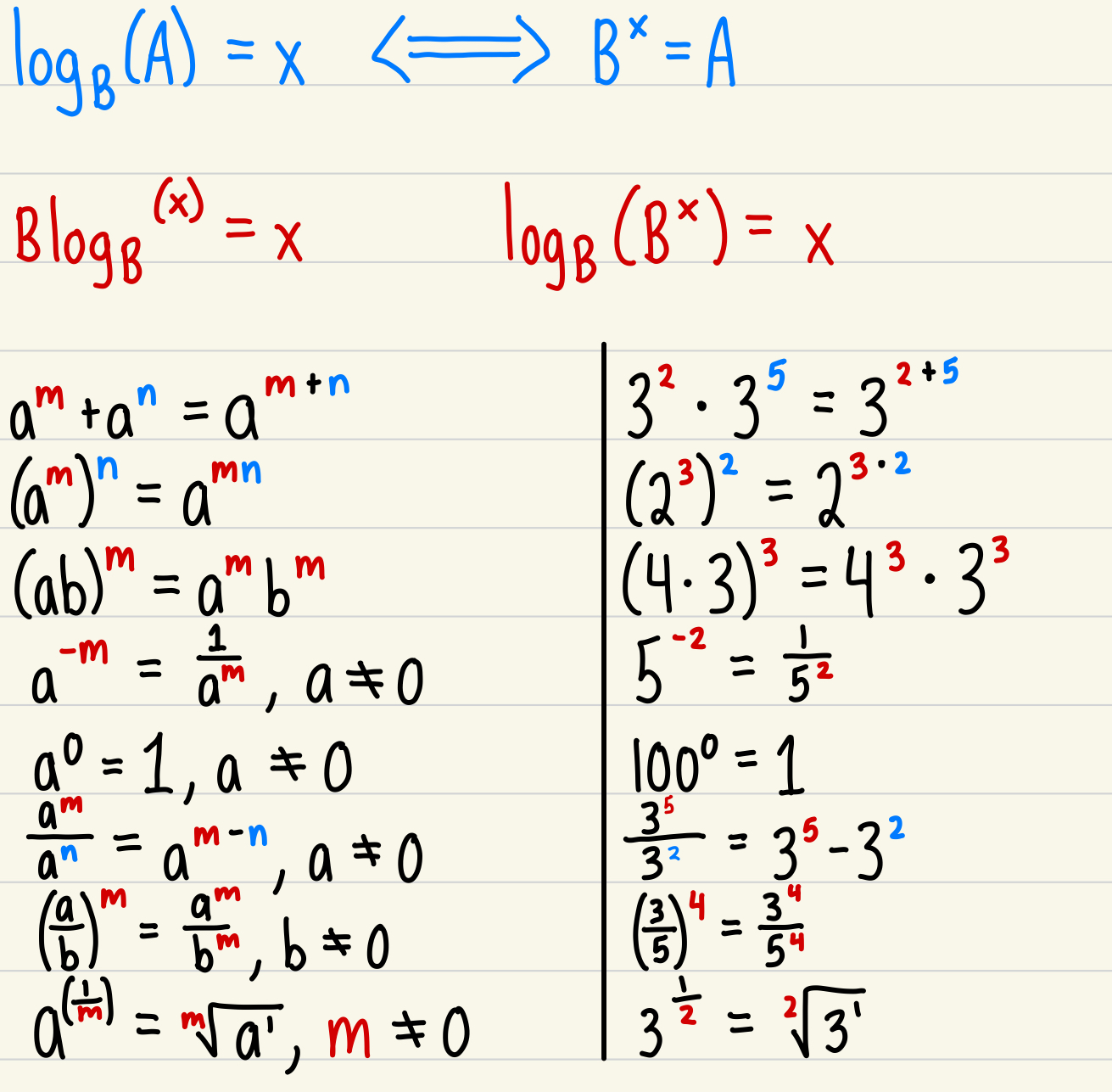AP Precalculus Formula Sheet
Unit One: Polynomial and Rational Functions
Average rate of Change:
Measures how much the function value changes over an interval relative to the change in x.
Increasing/Decreasing Functions:
Increasing: The function values rise as (x) increases, indicating a positive slope/rate of change.
Decreasing: The function values fall as (x) increases, indicating a negative slope/rate of change.
A function is constant if it neither increases nor decreases over an interval.
Concavity:
Concave Up: The graph of the function looks like a smile, indicating that the slope is increasing.
Concave Down: The graph of the function looks like a frown, indicating that the slope is decreasing.
Types of Functions:
Linear: constant rate of change; equation is y = mx+b, where m is the slope
Quadratic: rates of change form a linear pattern; equation f(x) = ax^2 + bx+ c
Polynomial (degree n): nth (3rd in the graph) order rates of change are constant when x values are evenly spaced.
Local (Relative) Maximum/Minimum:
Maximum: Functions transitions from increasing to decreasing
Minimum: Function transitions from decreasing to increasing
Point of inflection:
Point where concavity changes; graph switches from curving upwards to curving downwards and vice versa.
Complex Roots:
If a complex number (z = a + bi) is a root of p(x), or a polynomial function with real coefficients, its complex conjugate (z = a - bi) must also be a root.
Even and Odd Functions:
Polynomial End Behavior:
Depends on degree and the sign of the leading coefficient
Rational Functions:
Zeroes of R are zeroes of P that are not also zeroes of Q
Hole in the Graph:
Hole: When both P and Q equal zero at x = c; indicates that the function is undefined, but can often be simplified by canceling common factors.
Vertical Asymptote:
Vertical asymptotes occur at x-values where Q(x) = 0 while P(x) is non-zero.
End Behavior of Rational Functions:
Indicates whether the rational function approaches 0, infinity, or negative infinity as x approaches positive/negative infinity.
Binomial expansion
Can be found using box multiplication or Pascal’s Triangle
Transformations of Functions:
Unit Two: Exponential and Logarithmic Functions:
Base Logarithmic Function:
Exponential Rules:

Logarithmic Rules:
When log has no subscript, it is assumed to be 10
For natural logarithms (ln), they are equal to regular logarithms with the value of e as the subscript.
Function Composition:
Function Inverses:
Unit Three: Trigonometry and Polar Coordinates
Standard Position:
Vertex is at the origin and one ray of the angle is on the positive x-axis
Arc Length Formula:
Unit Circle (Radian Angles):
Sine, Cosine, and Tangent:
Special Right Triangles:
Trigonometric Identities:
Graphs of Trigonometric Functions:
The equation is y = Asin( B (x + c)) + D where:
A is amplitude
The period is equal to 2π/B
The phase shift is C
The midline is y = D
Vertical Asymptotes:
Inverse Trigonometry:
Polar Coordinates:
Important Formulas:
Modeling:
When looking at a semi-log plot where the vertical axis is logarithmically scaled and the graph looks linear, that is an exponential function.
For a residual plot, pattern means inappropriate and no pattern means appropriate.